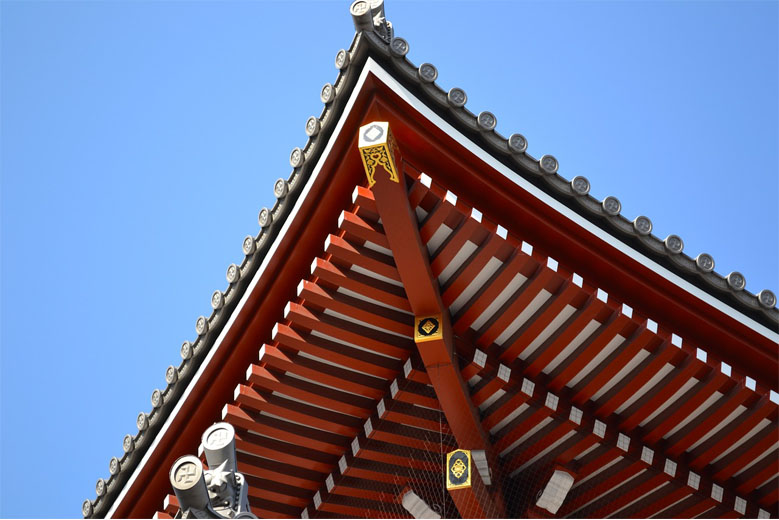
7 Day Japan Itinerary
This is a suggested itinerary for 7 days in Japan. This itinerary will take from from Tokyo out west to Kyoto and Osaka, and back to depart from Tokyo. This is an entirely self-guided itinerary, and the content below should be used as a reference to find activities and things for you to do.
For the purpose of the itinerary, we are not including arrival/departure dates as part of the overall day total.
The JR Pass is not required for this itinerary, as the individual cost of the bullet trains is cheaper than the upfront cost of the pass (50,000 JPY for 7 consecutive days).
Quick Links
Day 0 - Arrive in Japan
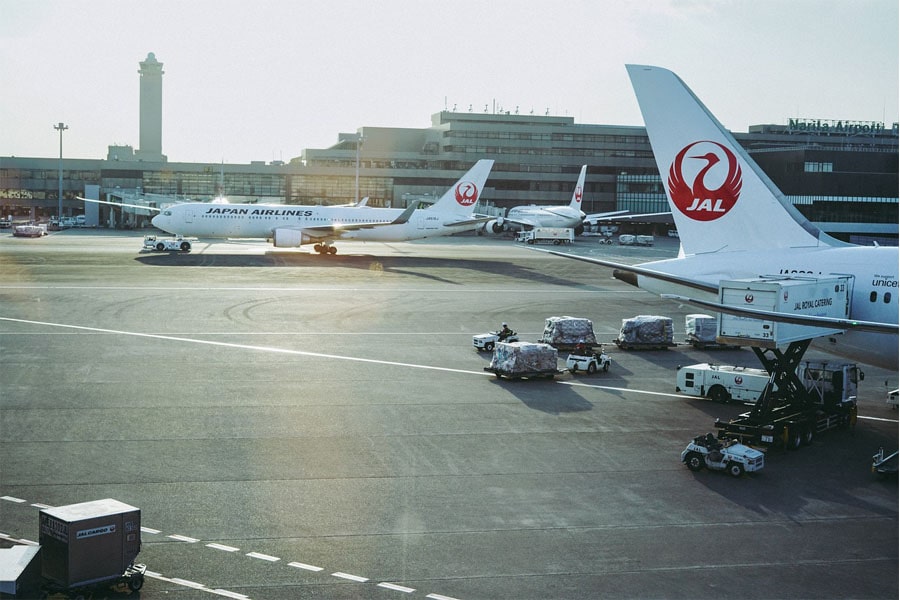
Tokyo is the most common entry point into Japan, which is why we are starting our itinerary in Tokyo. In Tokyo, there are 2 international airport which service the world. Make sure that you know which one you are arriving and landing at.
Haneda International Airport (HND) – More central to Tokyo, very easy to access central Tokyo.
Narita International Airport (NRT) – Approximately an hour from Tokyo, but has direct train connections on the Narita Express.
Day 1 & 2 - Tokyo
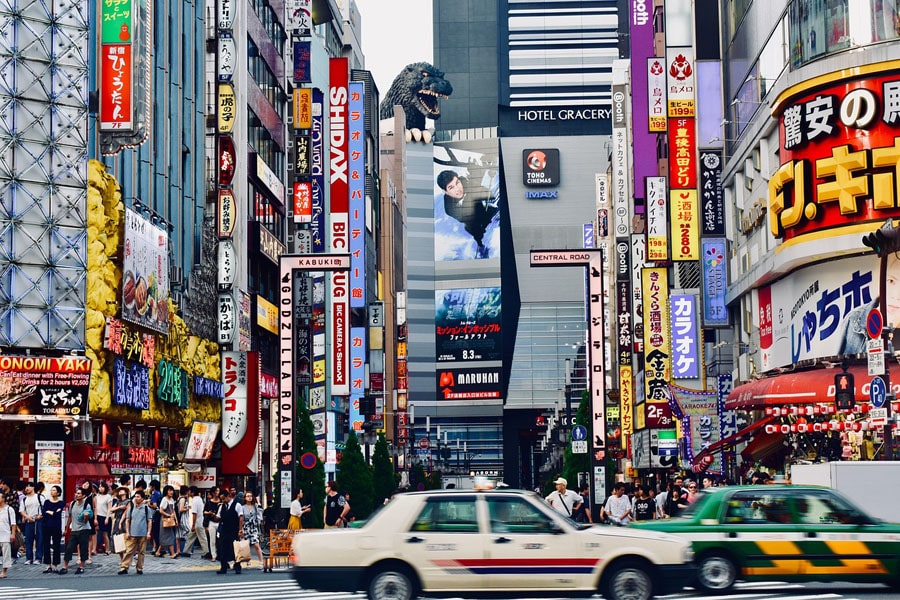
Tokyo, Japan’s vibrant capital, is a pulsating metropolis where tradition merges seamlessly with innovation. Skyscrapers punctuate the skyline alongside historic temples and serene gardens. Its bustling streets host a myriad of cultural experiences, from savoring sushi at world-class restaurants to exploring electronic wonderlands in Akihabara. Tokyo’s efficient transport system connects neighborhoods bustling with life, like Shibuya’s iconic scramble crossing and the serene cherry blossom-filled parks of Ueno.
For getting around Tokyo, you may be interested in getting a 48 hour Tokyo Subway pass.
Suggested Activities in Tokyo
Senso-ji, also known as Asakusa Kannon Temple, is a famous Buddhist temple located in the Asakusa district of Tokyo. It is one of Tokyo’s oldest and most significant temple, attracting millions of visitors each year. Senso-ji is a religious site and a cultural landmark that showcases traditional Japanese architecture, history, and spirituality.
Time required: 30 minutes to 1 Hour
Without a doubt, Tokyo Disney is an iconic attraction of Tokyo. See below tickets for Tokyo Disney
Time required: 1 Day
Tokyo Skytree is among one of the most notable tourist attractions in Tokyo. The landmark has a total height of 634m, making it the tallest structure in Japan, and was the tallest tower in the world at the time of completion.
The Tokyo Skytree serves as a broadcasting tower, observation deck, and a restaurant. The Tokyo Skytree is among one of the greatest viewing platforms in Tokyo, providing 360° views as far as the eye can see.
Read more…
Time required: 1 hour
Tokyo Tower, located in the heart of Tokyo, is Japan’s 2nd tallest structure, standing at 333m tall. Construction was completed for the Tokyo Tower in 1958, and was the countries tallest structure, until it was eventually overtaken by the equally loved Tokyo Skytree.
Today, over 60 years after it’s completion, the tower serves as a communications tower and an observation deck, providing stunning views both day and night of the Tokyo metropolitan skyline and the Tokyo Bay, and it is one of the most recognizable landmarks of Tokyo.
Time required: 1 Hour
Akihabara, often referred to as “Akiba,” is a vibrant and iconic neighborhood in Tokyo, Japan. It has earned a global reputation as an electronics district and a hub of anime, manga, gaming, and otaku (geek) culture. Akihabara offers a unique and bustling atmosphere, attracting visitors from all over the world who are interested in technology, pop culture, and entertainment.
Historically known for its numerous electronics shops, Akihabara is still a paradise for tech enthusiasts. You can find a wide range of electronics, gadgets, computer parts, cameras, and home appliances in the many stores lining the streets. With the massive advertisements and store fronts all over, the streets of Akihabara are rather stunning, and even if you don’t plan on buying anything, it is certainly a great place to explore.
Time required: 1 hour +
Shibuya Crossing is known for its impressive size and the sheer number of people who cross it at any given time. It is estimated that up to 2,500 people cross the intersection at once during peak hours. In it’s madness and chaos, it can be a little disorientating and one could easily loose track of their group while crossing the road, as everyone is heading is all kinds of directions.
Time required: 5 minutes + (Or longer if you want to go people watching!)
The Tokyo Metropolitan Government Building is an icon of the Tokyo Skyline. It serves as the headquarters of the Tokyo Metropolitan Government, which governs the 23 special wards of Tokyo, as well as other cities, towns, and villages within the Tokyo Metropolis.
One of the main attractions of the building is its observation decks found on each of the North and South Towers, which offer panoramic views of Tokyo and, on clear days, even Mount Fuji. The observation decks are located on the 45th floors of each tower and are accessible to the public free of charge.
Read more…
Time required: 30 minutes – 1 hour
The Tokyo Rainbow Bridge is a stunning structure that spans across Tokyo Bay, connecting the city’s central district with the man-made island of Odaiba. Completed in 1993, the bridge has become an iconic landmark in Tokyo and a popular destination for tourists and locals alike. You can walk on the underside of the Rainbow Bridge, which in itself is a pretty unique attraction.
Time Required: 30 Minutes
Meiji Shrine (Meiji Jingu) is one of Japan’s most famous shrines, certainly the most famous shrine in Tokyo. It sprawls over an enormous, forested park in the middle of the city full of towering trees that gives one the impression they are in fact standing in a forest somewhere out in the mountains rather than in the middle of the world’s largest city. It sprawls over an enormous, forested park in the middle of the city full of towering trees that gives one the impression they are in fact standing in a forest somewhere out in the mountains rather than in the middle of the world’s largest city.
Time required: 30 minutes – 1 hour
Toyosu Market is the wholesale market in Tokyo that succeeded the famous Tsukiji Fish Market. The Toyosu Market officially opened in October 2018, and it consists of three main areas: the Toyosu Wholesale Market, the Toyosu Fish Intermediate Wholesale Market, and the Toyosu Market Fisheries Wholesale Building.
Similar to Tsukiji, Toyosu Market is known for its tuna auctions, where large tunas are auctioned to buyers, including sushi restaurants and seafood retailers. The auctions are held in a specialized area, and visitors can observe the process from a designated viewing area.
The markets begins at around 5:30am, lasting until around 6:30am.
The Odaiba Statue of Liberty is the Tokyo based Statue of Liberty, sitting just outside Daiba Station, in Odaiba Kaihin-Koen park. There actually 4 Statues of Liberty in Japan. One in Osaka, another one in Shimoda (Shizouka Prefecture), A statue in Hachinohe (Aomori Prefecture) and of course, the Odaiba Statue of Liberty on the shore of the Tokyo Bay. The statue is 1/7th the size of the New York Statue of Liberty, and was originally intended to be a temporary fixture to the Tokyo waterfront, as a symbol of the friendship between Japan and France – Much like the New York one to symbolize the friendship between the U.S.A and France.
Time Required: 30 minutes
Ueno Park is a large public park located in the Taito ward of Tokyo, Japan. It was established in 1873 and is one of the city’s most popular destinations for both locals and tourists. The park covers an area of over 130 acres and is home to a number of important cultural and historical landmarks, as well as a wide variety of plants and flowers.
One of the most notable landmarks in Ueno Park is the Ueno Zoo, which is home to over 3,000 animals from more than 400 different species. Visitors can see a wide variety of animals, including giant pandas, elephants, tigers, and gorillas.
Time required: 30 minutes – half a day.
Find hotels in Tokyo
Day 3 & 4 - Kyoto
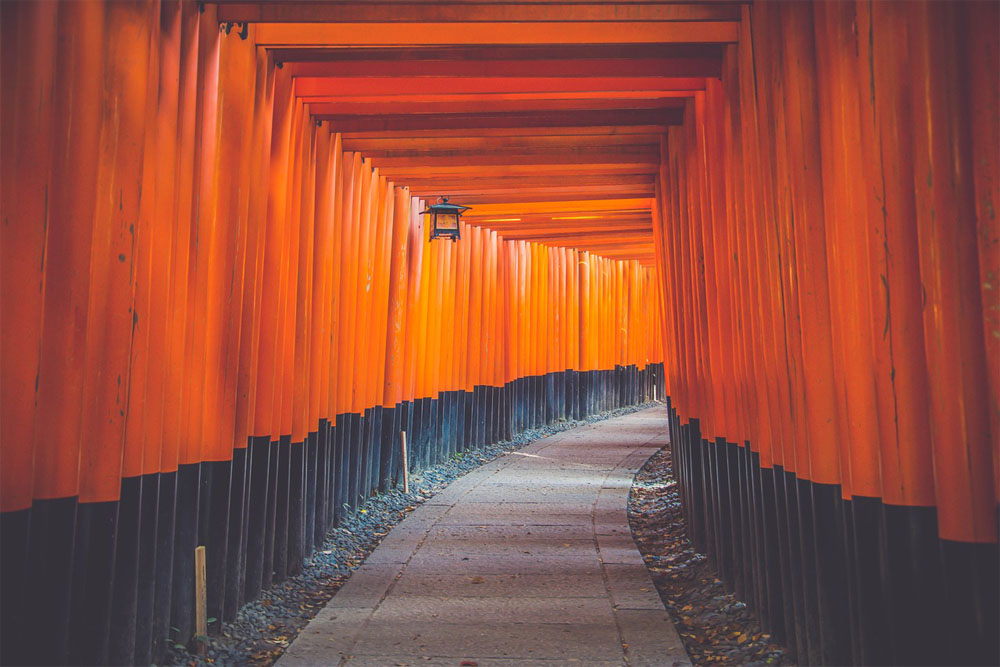
Welcome to Kyoto, a city where every street whispers the tales of ancient traditions, where time seems to stand still amidst the beauty of centuries-old temples and the tranquility of traditional tea houses. This meticulously crafted travel itinerary invites you to immerse yourself in the enchanting allure of Kyoto, where the past and present coalesce in a seamless dance of culture, history, and natural splendor.
Take the bullet train from Tokyo Station, to Kyoto Station: 14,170 JPY – approx 2 hours.
Suggested Activities in Kyoto
Fushimi Inari Taisha, commonly known as Fushimi Inari Shrine, is one of Kyoto’s most popular destinations. It gained fame by have thousands of bright orange torii gates which line the pathways that scale the mountain side.
Fushimi Inari Shrine (Fushimi Inari Taisha) is an important shrine in the Shinto Faith, and was originally founded some years before the capital of Japan became Kyoto in 794. The Shrine is dedicated to the Shinto God of Rice, Inari. Fushimi Inari Taisha has been built on Mount Inari, and the path of Torii gates snakes up 233 meters to the summit.
Located in Western Kyoto city, the Arashiyama Bamboo Grove is a popular destination among locals and tourists alike. Thousands of bamboo stalks have grown to enormous heights, which create one of Kyoto’s most scenic destinations, attracting photographers from all around the world.
For the best shots of the bamboo, make sure to get there early before others get there,
Time required; 15-20 minutes.
Kinkaku-ji (金閣寺), otherwise known as the ‘Golden Temple’, is a famous Zen temple in Kyoto, in where the top two floors are covered in gold foil.
The temple was once the retirement house of Shogun Ashikaga Yoshimitsu, and following his death in 1408, the villa became a Zen temple as per his will. The grandson of Yoshimitsu, built Ginkaku-ji, or the Silver Temple, on the other side of Kyoto which was inspired by Kinkaku-ji.
Time required: 30-60 minutes
The Iwatayama monkey park is one of the few places around the Kansai area where people can go and see monkey’s in their natural habitat and not enclosed in a zoo. It’s located in Arashiyama, near the Arashiyama Bamboo Grove, and because of this is a very popular tourist destination.
The 120 or so monkeys seen here are the Japanese Macaque monkey, the same species of monkey famously seen relaxing in a hot spring in Nagano Prefecture.
Kiyomizudera is one of the most reverred temples in Japan. Kiyomizudera temple translates to Pure Water Temple, as the temple was founded in the late 8th century near to Otowa Waterfall, which is fed from a spring on the hill Kiyomizudera temple was built upon. It’s a popular sightseeing spot in Japan, attracting millions to the temple grounds yearly as the temple offers unforgettable views and cultural experiences.
The Kyoto Tower sits in the center of Kyoto, directly outside of Kyoto Station. The Kyoto Tower has an observation deck at 100m high, providing 360° panoramic views of Kyoto. Feel free to use the telescopes on the 5th floor of the Observation deck, these are free of charge and provide more clarity at some of attractions from afar.
Time required: 30 minutes
Nijo Castle, or Nijōjō, is a Japanese castle in Kyoto, near the city centre. It is probably one of the more unique castle grounds you will come across. Most Japanese Castles will be located atop mountains or hills, these served as an extra fortification for the castle in case of an attack. The Nijo Castle is quite the opposite, and is what’s called a flatland castle, meaning that the castle keep was built on flat ground and not on a hill or a mountain. This allowed for more space to build the palace which severed as a residence and office for the Shogunate Tokugawa Ieyasu, who was the first Shogunate of the Edo Period (1603-1868).
Time required: 1 Hour
Kyoto Imperial Palace is a must-see destination for those visiting the ancient capital of Japan. Located in the heart of Kyoto, the palace was the residence of the emperor and his family from 794 to 1868. Today, the palace serves as a symbol of Japan’s rich history and culture.
The palace grounds are open to the public, and visitors can take a guided tour to learn about the history of the palace and the imperial family. The tour includes a visit to the main palace buildings, including the Seiryo-den, which was used for state ceremonies, and the Kogosho, which served as the emperor’s residence.
Time required: 1 Hour
Heian Shrine is a shrine located to the northeast of Kyoto city’s centre. It was built in 1895 to commemorate 1100 since the founding of Heian, meaning that it’s one of the newest shrines in the ancient city of Kyoto, yet it’s still among the more popular shrines in the city, given the beautiful architecture and serene gardens which are attached to the shrine grounds.
Time required: 30 minutes
Tenryu-ji Temple is a culturally significant Zen Temple in Kyoto, and is among the Kyoto UNESCO World Heritage sites, Monuments of ancient Kyoto. Today, the beautiful buildings and lovely gardens of Tenryu-ji temple has become a popular attraction for visitor to Arashiyama.
Time required: 45 minutes
Higashiyama, located in the eastern part of Kyoto, is a district that embodies the traditional and historical charm of the city. This area is renowned for its well-preserved streets, ancient temples, and atmospheric surroundings, making it a popular destination for both locals and visitors.
Where to stay in Kyoto
Day 5 - Hiroshima & Miyajima

Hiroshima, a symbol of resilience, is a modern city on Japan’s Honshu island, famed for its poignant history and vibrant present. Devastated by World War II, it’s now a beacon of peace and reconciliation, with landmarks like the Peace Memorial Park and Atomic Bomb Dome serving as poignant reminders of the past.
Miyajima, a short ferry ride away, is a picturesque island known for its iconic floating torii gate and serene beauty. Its lush forests and sacred shrines, including Itsukushima Shrine, create a serene atmosphere perfect for reflection. Together, Hiroshima and Miyajima offer a profound journey through history and tranquility.
Bullet train from Kyoto Station to Hiroshima Station: 11,940 JPY – Approx. 1 hour 45 minutes.
Suggested activities in Hiroshima Prefecture
The Hiroshima Peace Memorial Park is located in Hiroshima city and serves as a tribute to the victims of the atomic bombing on August 6, 1945. The park encompasses various monuments, memorials, and buildings, including the iconic Atomic Bomb Dome, which was one of the few structures left standing near the bomb’s hypocenter.
The park also features the Peace Memorial Museum, which exhibits artifacts and documents related to the bombing and promotes peace education. The Hiroshima Peace Memorial Museum can be a compelling experience for some, and if you are travelling in a group, you may notice how differently people react to the museum. Some may be moved to tears by the powerful imagery, while others may quietly reflect on the experience. Due to the nature of the museum, we remind you to be respectful when taking photos and videos inside the museum, as there may be people going through many emotions as they gaze upon the exhibits. The last entry to the museum is 30 minutes before closing.
Time required: 1-2 Hours
The Hiroshima Atomic Bomb Dome, also known as the Genbaku Dome, is a UNESCO World Heritage Site located in Hiroshima, Japan. The building is a skeletal structure of a former exhibition hall that was destroyed during the atomic bombing of Hiroshima on August 6, 1945.
The dome was one of the few buildings that remained standing after the bombing, and it has since become a symbol of the devastating effects of nuclear war. The Atomic Bomb Dome stands only a few hundred meters away from where the bomb that devastated Hiroshima exploded. What remains of the dome now stands as a reminder of the tragedy that occurred on that day, and serves as a monument to the victims of the bombing.
Miyajima, also known as Itsukushima, is a small island located off the coast of Hiroshima in Japan. This magical place is known for its stunning natural beauty and rich cultural heritage, making it one of the most popular tourist destinations in the country.
The island has a maximum elevation of 535 meters above sea level at the summit of Mt. Misen. You can explore the Mt.Misen, and catch a ride on the Misen ropeway for a unique view of Miyajima and the surrounding Seto Inland Sea of Japan.
Time required: Half a day
Itsukushima Shrine can be found on the Island of Itsukushima, otherwise know as Miyajima in Hiroshima Prefecture. Itsukushima Shrine is the top attraction of the island, attracting millions of people the island each year.
The shrine is built on top of the water and is best seen during high tide, when it seems to float on the water. The walkway that leads to the main gate, called the “O-torii,” is a massive vermilion-colored gate that stands at 16.2 meters tall and is one of the most iconic symbols of Japan. This gate is truly a sight to behold and is one of the most photographed landmarks in the country.
Time required: 30 minutes+
Senjokaku, also known as Senjokaku Hall or Toyokuni Shrine, is a historic structure located on Miyajima Island in Japan. Miyajima Island is renowned for its iconic “floating” torii gate, which is considered one of the Three Views of Japan. Senjokaku is situated on the slopes of Mount Misen, providing stunning views of the surrounding landscape, and the famous Itsukushima Shrine.
Time required: 10-20 minutes
Mt.Misen, also known as Mount Misen (弥山), is a prominent peak on the island of Miyajima. There are several hiking trails that lead to the summit of Mt. Misen, offering different levels of difficulty and scenic views along the way. The hiking paths pass through lush forests, picturesque rock formations, and interesting geological features. The most popular route is the Momijidani Course, which starts near the Momijidani Park and takes hikers through the Momijidani Valley.
For those who want to make it up the summit without hiking, the Miyajima Ropeway is a perfect alternative. The Miyajima Ropeway is a cablecar system that takes you near the summit of the Mt.Misen, to Shishiiwa Observatory, which provides a stunning view of the island.
Time required: 1 to several hours.
To see the famous Itsukushima shrine at both high and low tides, we recommend staying the night on the island, so that you can plan your visits to shrine around both tide times without worrying about missing the ferry back to the mainland.
Bonus side-trip - Himeji Castle

On the to Osaka from Hiroshima, you may want to consider stopping in the city of Himeji, to visit Himeji Castle. Himeji Castle is one of the most famous castles in Japan, and one of the only remaining castles from Japan’s feudal era.
This castle is very unique, and stopping over on the way to Osaka will only take 2 hours or so. The castle is a 20 minute walk from the Himeji Station, or a taxi ride will cost approximately 1500 JPY one way.
Himeji Castle is well worth the visit. Read more…
Hiroshima Station to Himeji Station on the bullet train: 8,970 JPY – Approx 1 hour.
Day 6 & 7 - Osaka
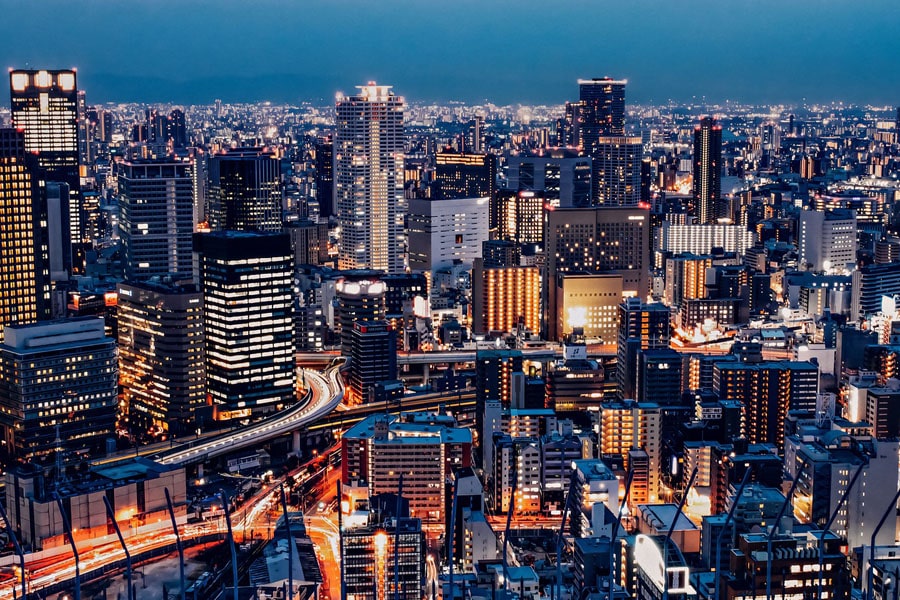
Osaka, a dynamic city in Japan, is a vibrant hub of commerce, culture, and cuisine. Renowned for its lively spirit, Osaka boasts historic landmarks like Osaka Castle and the iconic Dotonbori district, adorned with neon lights and bustling with street food stalls.
The city’s culinary scene tantalizes taste buds with savory delights such as okonomiyaki and takoyaki. Osaka’s warm-hearted locals, known for their friendliness and humor, welcome visitors with open arms.
Himeji Station to Shin-Osaka Station on the bullet train: 3,810 JPY – Approx 30 minutes
Hiroshima Station to Shin-Osaka Station on the bullet train: 10,950 JPY – Approximately 1 hour 30 minutes.
Suggested activities in Osaka
Osaka Castle, also known as Osaka-jo in Japanese, is a historic and iconic landmark located in Chūō-ku, Osaka, Japan. It is one of Japan’s most famous castles and holds significant historical and cultural importance, and today is a popular tourist destination in Osaka.
Time required: 1-2 Hours
Located in the heart of Osaka, Dotonbori is a must-visit destination for anyone looking to experience the vibrant culture and energy of Osaka.
One of the first things that visitors will notice upon arriving in Dotonbori is the iconic Glico Man sign. This landmark, which features a runner crossing the finish line, has been a fixture of the area for over 90 years and is a popular spot for taking photos.
Dotonbori has a number of charming boutiques and shops selling everything from traditional Japanese goods to the latest fashion items. Whether you’re looking for a unique souvenir or just want to indulge in some retail therapy, Dotonbori has you covered.
Time required: 1-2 hours+
No trip to Osaka would be complete without seeing Universal Studios Japan, and it’s no surprise why USJ is one of the top things to do in Osaka. This should take all day, but be sure to get there early in the morning as lines can quickly get long. So get ready to kick back, and have some fun on your second day in Osaka! If you want to pre-book your tickets to USJ, feel free to use the below tiles, or follow this link!
Time required: 1 Day
The Osaka Aquarium Kaiyukan is one of the world’s greatest aquariums. This one-of-a-kind aquarium takes visitors on a journey through the depths of the Pacific Ocean, showcasing a diverse array of marine life from all around the world. It is home to some of world’s most wonderous, large, adorable and outright bizarre creatures, such as Whale Sharks, the Japanese Salamander, Jelly fish, seals, snow crabs and so much more. There are over 600 unique species that reside inside the Osaka Aquarium, allowing you to explore the beauty of our underwater planet.
Time required: 1-2 hours
Abeno Harukas 300 is a skyscraper located in the Abeno district of Osaka, Japan. It is part of the larger Abeno Harukas complex, which includes a shopping mall, offices, a hotel, and an art museum. The “300” in its name refers to its height in meters, 300 meters. At the time of completion, it was the tallest building in Japan, but lost the title in 2023 to Azabudai Hills Mori JP Tower in Tokyo.
Time required: 30-90 minutes
Located in the heart of Osaka’s central business district, the Umeda Sky Building is one of the tallest structures in the city. It has two towers connected by a floating garden observatory on the 39th floor, offering a panoramic view of Osaka and beyond. The observation deck is a perfect place to take in the beauty of the city, whether during the day or at night.
Time required: 30-90 minutes
The Ebisu Bashi-Suji Shopping street is a popular shopping arcade which runs from Namba Station, right through to Dotonbori. Throughout Ebisu Bashi-suji, you can find all sorts of stores, from clothing, technology, family restaurants, and mouthwatering street food. It is an extremely popular area that tourists and locals alike frequent.
Located in the heart of Osaka bay, and mere minutes from the world famous Osaka Aquarium Kaiyukan, stands the Tempozan Giant Ferris wheel.
The Tempozan Giant Ferris Wheel stands at 112 meters tall, boasting a circumference of 300m. Upon opening in 1997, it held the world record for largest Ferris Wheel for 2 years, until it was later passed by another Ferris Wheel in Tokyo.
Time required: 30 minutes
The Ebisu Tower Ferris Wheel is an attraction like none other. While most Ferris wheels rotate in a circle, the Don Quijote Ferris goes vertical initially and rounds off slightly at the top, then again, a vertical decent. As you go up the ferris, you are met with nice view of the Osaka Sky line.
Time required: 20 minutes
Where to stay in Osaka
Departure Day
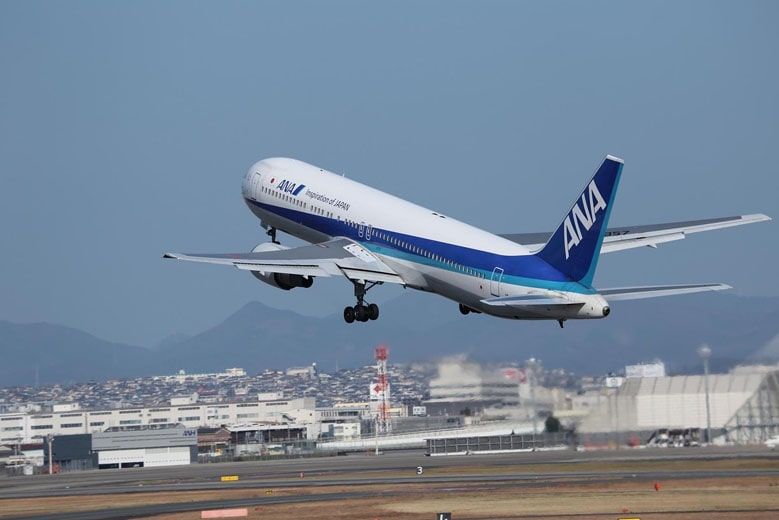
The time has come to depart Japan. Ensure that you have ample time to get from Osaka, to your departure port – likely Tokyo.
You may find it helpful to book a flight from one of the Osaka Airports (either KIX or ITM) to your departing airport for your convenience. ANA and JAL are reliable airlines, but Japan also has a number of lowcost airlines which can offer fares between Osaka and Tokyo for as low as 3000 JPY (approximately $25 usd).
Check out cheap flight and more on SkyScanner.
